Curriculum Education
Curriculum Education
-
IPB undergraduate curriculum is the curriculum of higher education which is a set of plans and arrangements regarding the content and study materials and lessons and methods of delivery and assessment are used as guidelines for the implementation of teaching and learning activities at IPB
-
Major Minor's Curriculum is competency-based curriculum where each student took courses in one major as a field of expertise (competence) and can follow primary education in one of the minor as a field of expertise (competence) complement.
-
Major is an areas of expertise is based on discipline (science) primarily in a department or faculty, where students can deepen their competencies (knowledge, skills and behaviors) in a package of specific subjects.
-
Minor is a complementary areas of expertise are taken by students from other departments outside the main department (major).
-
Based on the goals of education, subjects in the curriculum degree program consists of general subjects, major subjects, inter-departmental courses, minor courses and courses supporting (supporting course).
-
Semester Credit Units (SCU) is a measure used to express (1) the study load of students, (2) the cumulative size of business success for a particular program, and (3) measure for the burden of education, especially for lecturers
-
One credits with lecture method includes three activities per week for one semester, with details as follows:
-
Activities scheduled face to face with the lecturer, such as lectures, conducted over 50 minutes.
-
Structured academic activity, namely the study activities are not scheduled, but planned, such as homework, solving problems, who performed for 60 minutes.
-
Independent activities to explore, prepare, or for other academic tasks, such as preformance form read reference books done for 60 minutes.
-
-
One credits with selekta capita method and the same seminar as the calculation method in class activities.
-
One credits with lab work methods, practice field or professional skills, service learning, internships, and research are as follows:
-
Practicum: calculation workload one semester credit for practical activities in the garden, greenhouse, laboratories, workshops (workshops), animal hospital, home, or studio, is equal to the task load for 2 to 4 hours (2 to 4 times 60 minutes) each week in one semester.
-
Practice field / profession skills, service learning, and internships: task load calculation is one semester credit is equivalent to 4 to 5 hours (4 to 5 times 60 minutes) in a week in one semester, or equivalent to 2 / 3 months (16 to 17 days work) for 4 to 5 hours each day.
-
Research and preparation of thesis: load calculation task is one semester credit is equivalent to 3 to 4 hours in a week in one semester or 4 to 5 hours a day for 2 / 3 months (16 to 17 business days). One semester of study and preparation of the thesis (6 credits) equivalent to four months.
-
-
-
Undergraduate Curriculum for a degree have a study load of at least 144 semester credit units (SCU) and a maximum of 160 credits banyakknya. In the case of students taking a double major or double major and minor studies made possible a greater burden.
-
The curriculum for each major set by Regulation / Decree of the Rector
-
Subjects Code written in space six digits with the following details:
-
first, 2nd, and 3rd digits are filled in form 3rd of alphabet from departement name, except for general subjects IPB coded
-
fourth digit, shows the level of depth of knowledge
-
fifth digits are filled in the form of a number that indicates the serial number or Genetic Studies Section at the Ministry; digunakanangka 0-9
-
Sixth digit are filled in the form of numbers indicating the serial number of courses in family science / section concerned; use the digits 0-9. If it is necessary to be forwarded by letter of the alphabet from A up to Z
-
-
Writing Procedures for Total Loan (Loan Charges) and Prerequisite Courses:
-
Total credit (credit expenses) a course written after the relevant course code in the space of 6 digits. (1st digits. The total credit load, 2nd digits Parentheses Open, 3rd digit. Clock-face lectures of the courses in question, the 4th digit. Dash, digit of the 5th. Clock-face practicum, 6th digits. The brackets lid. Example: 3 (2-3).
-
Subjects who have the prerequisite subjects are marked by writing code prerequisite subjects after writing the course credit load. Each student will take courses that have prerequisite subjects, must take prerequisite courses first.
-


